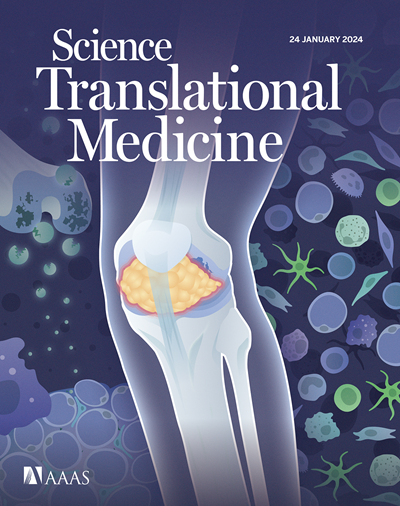Metabolic surgery reduces CRC disease progression through circulating bile acid diversion
IF 14.6
1区 医学
Q1 CELL BIOLOGY
引用次数: 0
Abstract
Obesity is a global epidemic characterized by energy disequilibrium, metabolic disorders, and fat mass development that greatly affect the health status of individuals. There is evidence that the intake of a high-fat diet and overweight are associated with the incidence of colorectal cancer (CRC). Metabolic surgery has been associated with improvements in obesity-related comorbidities and a reduction in the overall cancer risk. However, the underlying mechanism by which metabolic surgery reduces the risk of CRC remains unknown. To understand the antitumoral mechanism of bariatric surgery, we analyzed the development of CRC after Roux-en-Y gastric bypass (RYGB) surgery in an RYGB-CRC mouse model. Here, we showed that RYGB surgery substantially reduced primary tumorigenesis and prevented metastasis. This protective effect was mediated by bile acid (BA) exclusion from the proximal small intestine, leading to BA diversion in the preceding parts of the gastrointestinal tract and in circulation. The diverted BA profile in RYGB mice showed antitumoral and antimetastatic effects that were verified by BA exclusion of the proximal small bowel without the systemic metabolic installations of RYGB surgery by a cholecystointestinal shunt (CIS) surgery. RYGB surgery thus leads to reduced primary BAs and elevated secondary BAs in circulation. In a translational study involving patients with CRC with metachronous liver metastases, we confirmed that reduced primary BA concentrations in the serum were associated with prolonged time to metastasis, underscoring the critical role of BAs in CRC progression and metastatic development.
代谢手术通过循环胆汁酸转移减少结直肠癌疾病进展
肥胖是一种以能量失衡、代谢紊乱和脂肪堆积为特征的全球性流行病,严重影响个体的健康状况。有证据表明,摄入高脂肪饮食和超重与结直肠癌(CRC)的发病率有关。代谢手术与肥胖相关的合并症的改善和总体癌症风险的降低有关。然而,代谢手术降低结直肠癌风险的潜在机制尚不清楚。为了了解减肥手术的抗肿瘤机制,我们在RYGB-CRC小鼠模型中分析了Roux-en-Y胃旁路手术(RYGB)后结直肠癌的发展。在这里,我们发现RYGB手术大大减少了原发肿瘤的发生并防止了转移。这种保护作用是通过近端小肠排除胆汁酸(BA)介导的,导致BA在胃肠道和循环的前面部分转移。在RYGB小鼠中,转移的BA谱显示出抗肿瘤和抗转移作用,通过胆囊肠分流(CIS)手术排除近端小肠BA,而不需要RYGB手术的全身代谢装置,证实了这一点。因此,RYGB手术导致循环中原发性BAs减少和继发性BAs升高。在一项涉及伴有异时性肝转移的结直肠癌患者的转化性研究中,我们证实了血清中原发性BA浓度的降低与转移时间的延长有关,强调了BA在结直肠癌进展和转移发展中的关键作用。
本文章由计算机程序翻译,如有差异,请以英文原文为准。
求助全文
约1分钟内获得全文
求助全文
来源期刊

Science Translational Medicine
CELL BIOLOGY-MEDICINE, RESEARCH & EXPERIMENTAL
CiteScore
26.70
自引率
1.20%
发文量
309
审稿时长
1.7 months
期刊介绍:
Science Translational Medicine is an online journal that focuses on publishing research at the intersection of science, engineering, and medicine. The goal of the journal is to promote human health by providing a platform for researchers from various disciplines to communicate their latest advancements in biomedical, translational, and clinical research.
The journal aims to address the slow translation of scientific knowledge into effective treatments and health measures. It publishes articles that fill the knowledge gaps between preclinical research and medical applications, with a focus on accelerating the translation of knowledge into new ways of preventing, diagnosing, and treating human diseases.
The scope of Science Translational Medicine includes various areas such as cardiovascular disease, immunology/vaccines, metabolism/diabetes/obesity, neuroscience/neurology/psychiatry, cancer, infectious diseases, policy, behavior, bioengineering, chemical genomics/drug discovery, imaging, applied physical sciences, medical nanotechnology, drug delivery, biomarkers, gene therapy/regenerative medicine, toxicology and pharmacokinetics, data mining, cell culture, animal and human studies, medical informatics, and other interdisciplinary approaches to medicine.
The target audience of the journal includes researchers and management in academia, government, and the biotechnology and pharmaceutical industries. It is also relevant to physician scientists, regulators, policy makers, investors, business developers, and funding agencies.
 求助内容:
求助内容: 应助结果提醒方式:
应助结果提醒方式:


